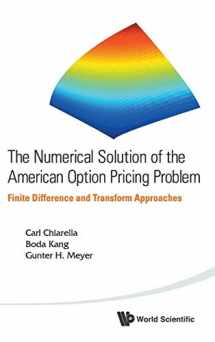
NUMERICAL SOLUTION OF THE AMERICAN OPTION PRICING PROBLEM, THE: FINITE DIFFERENCE AND TRANSFORM APPROACHES
Book details
Summary
Description
The early exercise opportunity of an American option makes it challenging to price and an array of approaches have been proposed in the vast literature on this topic. In The Numerical Solution of the American Option Pricing Problem, Carl Chiarella, Boda Kang and Gunter Meyer focus on two numerical approaches that have proved useful for finding all prices, hedge ratios and early exercise boundaries of an American option. One is a finite difference approach which is based on the numerical solution of the partial differential equations with the free boundary problem arising in American option pricing, including the method of lines, the component wise splitting and the finite difference with Psor. The other approach is the integral transform approach which includes Fourier or Fourier Cosine transforms. Written in a concise and systematic manner, Chiarella, Kang and Meyer explain and demonstrate the advantages and limitations of each of them based on their and their co-workers' experiences with these approaches over the years.


We would LOVE it if you could help us and other readers by reviewing the book
Book review



